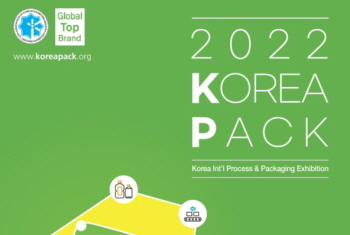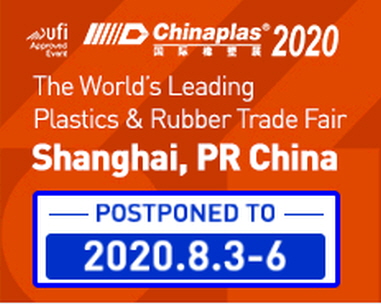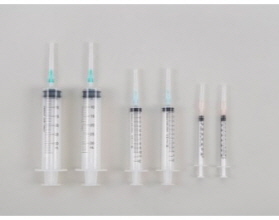Exhibitions/Seminars
EMO Hannover 2017) Process automation: on the way to the clouds
EMO Hannover 2017 will showcase navigational aids for the smart factory of the future
Cloud solutions are on everyone’s lips: digitalised data in app-based strongholds in the clouds are being tasked with automating processes and rendering them more efficient. The EMO Hannover 2017 will be showcasing viable approaches and providing fit-for-purpose navigational aids on the data highway to the smart factory of the future.
![]()
▲ “Smart System Optimisation” ensures technically detailed and at the same time automated evaluation of standstill causes and error causality relationships in a production line.
Photo: Fraunhofer IPA, Rainer Bez
A "smart system optimisation" capability that detects errors in concatenated production processes and automatically indicates their causes and their propagation" will be exhibited at the EMO Hannover 2017 by the Stuttgart-based Fraunhofer Institute for Manufacturing Engineering and Automation (IPA). How does this work in practice? Felix Georg Müller, the institute’s designated specialist on autonomous manufacturing system optimisation, explains: "Smart system optimisation involves a technically detailed and at the same time automated evaluation of standstill causes and error causality relationships in a production line. As soon as the production operation is up and running, data are synchronously communicated from all steps of the process to an analytical tool." This tool can now draw conclusions using the algorithms developed at the Fraunhofer IPA and edit the information concerned in the desired form.
![]()
▲ As soon as the production operation is up and running, data are synchronously communicated from all steps of the process to an analytical tool. The data are based on status and process information from all technical sub-steps of the entire process chain.
Photo: Fraunhofer IPA, Rainer Bez
Data-driven production optimisation
The database comprises status and process information from all technical sub-steps of the entire process chain. The analytical tool can use these to continuously identify in near-real-time where errors or standstills are occurring, or will occur as a result of several nonconforming factors interacting in different steps of the process. In contrast to classical OEE, the user receives a cause assignment immediately. (Editor’s note: OEE – Overall Equipment Effectiveness – is a measure for the added value created by a line, and a ratio that helps to determine, monitor and improve the productivity, the profitability and the overall effectiveness of production lines in the context of the manufacturing process.)
For example, the user sees which process is blocking the other one, and can identify where the causal trigger is located. It’s also possible to prioritise trouble-shooting, since the real bottleneck of the production line is being computed at any time. This is based on all currently detected error patterns, brief stops and reject rates, thus reflecting a real-time view of the line concerned.
The data sources are either additionally installed sensors, like smart cameras, or (if no process information is available)the machine data logger developed at the IPA. This is already capable of supplying to the analytical tool mass data from the Siemens S7-1500, Beckhoff CX1020 and Mitsubishi Q series of industrial control systems. Since this means that all relevant variables are available at millisecond intervals, the operating behaviour can be learned. "Thus we can give commonly used machine control systems a Big-Data capability, and integrate existing machine data into the analytical model," comments IPA expert Felix Georg Müller. "Our tool has already enabled us toachieve cycle time reductions of between six and ten per cent and monitor continuous compliance with the optimum on highly standardised machines at automotive component suppliers."
This data-driven production optimisation is based upon continual, extremely detailed analysis of the line’s behaviour, and of all individual processes involved in a production line. This cannot be done manually; automation is essential, due to the extremely high data processing volume concerned. For instance, the causes of errors are no longer sought solely in the line’s dynamic behaviour, but also, for example, by detecting anomalies in the process data of all individual processes. This means errors can be determined and eliminated even more precisely. With conventional approaches, a process optimiser would be occupied for hours or even days simply by reviewing and analysing a data record, and nonetheless could always only examine one time section – namely the one represented by the data record concerned.
At the EMO Hannover 2017, says Felix Georg Müller in conclusion, "visitors will be able to experience live how data-driven production optimisation actually works. The guests we welcome to our stand will be able to see for themselves at our mini-factory how dynamic bottlenecks, dependences in production lines, and anomalies are detected and evaluated. This means complete real-time transparency for complex production lines is possible at an time."
![]()
▲ To quote Patrick Kuhlemann, research assistant at the Institute of Production Engineering and Machine (IFW) of Leibniz University in Hanover: “At the EMO Hannover 2017, we’re anticipating a definite trend towards optimising production processes by means of integrated, innovative process control.”
Photo: IFW
Process chains in automakers’ plants
Process automation was also a keynote of the "Process Chain in Automakers’ Plants" (PiA) conference held in Bielefeld on 3 and 4 July 2017, where one of the projects presented was HL-Pro-Ket. What precisely is new about the "integrated approach"? Patrick Kuhlemann, a research assistant at the Institute of Production Engineering and Machine Tools (IFW) at Leibniz University in Hanover, explains: "First of all I should mention the innovative turning/rolling process: for this purpose, a hybrid turning/rolling tool has been developed which unites conventional turning and deep-rolling in a single tool. Another important result is the milling tools, which combine the process operations of smoothing, roughening, and chamfering, thus making for enhanced efficiency. The above processes replace the conventional forming processes, and render superfluous the hard fine machining hitherto required." Turning/rolling enables hardening distortion to be precompensated, which well-nigh halves the process chain involved. Moreover, flexibility is massively increased since in the event of a variant change only the NC code has to be altered, and no forming machines need to be retooled.
The "holistic process chain control," says the IFW scientist, "is a cross-machine concept: this means that the turning/milling centre and the inductive hardening machine are interlinked, and coordinate with each other using process-integrated geometry measurements." If a component after the hardening process is approaching a tolerance limit, then for the next component precompensation will be directly adjusted during soft machining. This means that the manufacturing quality is autonomously assured on a cross-machinery basis.
Driven by the rising number of individualised products, says Patrick Kuhlemann, "we are expecting a definite trend at the EMO Hannover 2017 towards optimising manufacturing processes by means of integrated, innovative process control. This is designed to bring the optimisation costs per component variant into line with the costs of efficient mass production." The IFW will be presenting a "feeling" machine tool. Thanks to skilful integration of process control and rigorous utilisation of the multiplicity of sensor signals available, the machine is able to detect and anticipate deviations in geometry or shape, and thus to compensate for them automatically: "In the shape of our demonstrator, we are thus presenting an innovative procedure that efficiently meets and masters the challenge of rising variant diversity."
![]()
▲ Single- and two-spindle machines can additionally be used as fully functional honing machines by means of their own adjuster spindle in conjunction with linear drives.
Photo: FFG-Werke
Interaction of processes is crucial for productivity
For Gerald Mies, President Milling & Factory Automation at FFG-Werke GmbH, Eislingen, "line productivity has always been crucial to a properly functioning manufacturing process". It is here, he says, that in future many decisions will be taken on the ideal interaction between machining, automation and assembly processes. For this purpose, vendors are needed who comprehend the planning and design work involved throughout the entire line, and can supply it from a single source. This, he continues, offers options for flexible modification of components and sequences while the development process is still ongoing, which in its turn assures perfectly harmonised machining and automation cycles, and thus maximised productivity.
In future, data interchange between automation, machining equipment and peripherals will be playing an increasingly significant role. "We optimise this," says Gerald Mies, "by having specialists in-house for CNC machining and automation, and can thus synergise the interfaces and match them precisely to the specific requirements involved. Besides optimisation of line effectiveness and the operating costs, a significant role is also played by new automation concepts, which have to be conceived in a symbiosis of machinery and automation. For the EMO Hannover 2017 "we shall be showcasing new ideas and visions." For example, there will be an "unparalleled, wide-ranging exhibition of modern-day production technology with path-breaking digital solutions".
What precisely can visitors expect? Gerald Mies explains: "We offer practically everyone involved with mechanical manufacturing and automation ideas for their own manufacturing operations." The bandwidth ranges from standard machines to highly productive series manufacturing in turnkey systems and on rotary transfer machines. Other exhibits will feature large-component machining with integrated additive technologies and non-cutting processes. "On our stand, we’ll be aiming to show visitors that we can provide them with an added value that they haven’t yet been able to expect from any other vendor."
▲ A high-performance work spindle and the twelvefold tool revolver ensure fast metal-cutting processes when machining the blank.
Photo: Emag
Massively progressing digitalisation
How does the Emag Group in Salach intend to massively progress the digitalisation of its production technology for establishing intelligent factories? Oliver Hagenlocher, Head of Marketing, explains: "Digitalisation is already a reality for us. Today’s world is now digital, so we need solutions immediately." Firstly, he says, the task is to identify how existing applications can be optimised and rendered accessible to the digital world. Secondly, it needs to be clarified what requirements this will entail for the production operation of tomorrow.
Besides developing software solutions, Emag also intends to render the relevant hardware (in the shape of machine tools and automation solutions) fit for purpose in the smart factory. This thrust is exemplified by the modularised machines and the matching modularised Trackmotion automation concept. This combination enables production lines to be constructed on a modular principle. Machining processes are broken down into easy-to-handle sub-processes, and set up on the appropriate modularised machines – which is already being practised in sprocket manufacture, for example. The Trackmotion automation system here enables the modularised machines to be very simply and efficiently concatenated.
With harmonised usability of the software, Emag aims to "simplify control, monitoring and analysis of the production operation". In practice, says Oliver Hagenlocher, it works like this: "The usability or user experience (UX) constitutes developments within the context of digitalisation, and describes the experiences that an end-user has gained with a particular software package. In the category of mobile apps, particularly, a positive UX is crucial to the success of a software package." Nowadays, users expect not only a substantively fit-for-purpose software package, but also an intuitive operator control concept, one that facilitates a fast start-up without any elaborate training being required.
"We’re looking forward," says Oliver, "to presenting our new solutions to existing and prospective customers at the EMO Hannover 2017, and in a direct dialogue collecting further ideas and opinions, enabling us to tailor our products even more responsively to the requirements obtaining in the industrial sector."
![]()
▲ To quote Peter Schneck, Managing Director of TDM Systems GmbH, Tübingen: “The present day spectrum of technical feasibility creates far more options for tool life cycle management – the future lies in the cloud.”
Photo: TDM Systems
Solutions in the cloud and at the machine
Another instrument for process optimisation is the Tool Lifecycle Management Strategy (TLM) from TDM Systems GmbH in Tübingen. Managing Director Peter Schneck explains how important this strategy is for the factory of the future: "Two years ago, when we introduced this strategy, we raised classical tool data management to a whole new level. Thus it’s the unique selling point of our software that the system not only manages and makes available any information once inputted, but above all that during production of a workpiece it collects the relevant data at the machine. This data feedback creates a continuous improvement process quasi in the loop."
From the EMO Hannover 2017, Peter Schneckis primarily expecting a focus on the issues of digitalisation and networking: "This has always been our core competence, long before the times of Industry 4.0. With this new era, the options available for tool life cycle management are multiplied." Networking – and thus TLM – no longer stops at the doors of the factory hall. Modern-day TLM, he says, means transparency and cooperation that transcend the boundaries of individual plants, locations and nations, with short response times and mobile utilisation. To quote Peter Schneck: "We are, of course, embracing the dominant trend of being able to manage data and make them available through and in the cloud. Thus the future of TLM lies in the cloud as well."
Author: Walter Frick, specialist journalist from Weikersheim
Contact persons
VDW German Machine Tool Builders’Association
Sylke Becker
Press and Public Relations
Corneliusstrasse 4
60325 Frankfurt am MainGermany
Tel. +49 69 756081-33
s.becker@vdw.dewww.vdw.de
Fraunhofer Institute for Manufacturing Engineering and Automation IPA
Ramona Hönl
Marketing and Communication
Nobelstrasse 12
70569 Stuttgart
Germany
Tel. +49 711 970-1638
ramona.hoenl@ipa.fraunhofer.de
www.ipa.fraunhofer.de
Institute of Production Engineering and Machine Tools (IFW) at the Leibniz University in Hanover
Patrick Kuhlemann
Research Assistant
An der Universität 2
30823 Garbsen
Germany
Tel. +49 511 762-18258
kuhlemann@ifw.uni-hannover.de
www.ifw.uni-hannover.de
FFG-Werke GmbH – FFG Europe & Americas
Joachim Jäckl
Salacher Strasse 93
73054 Eislingen
Germany
Tel. + 49 7161 805-2513
joachim.jaeckl@ffg-werke.com
www.ffg-werke.com
Emag GmbH & Co. KG
Oliver Hagenlocher
Head of Marketing
Austrasse 24
73084 Salach
Germany
Tel. +49 7162 17-4267
ohagenlocher@emag.com
www.emag.com
TDM Systems GmbH
Sandra Schneck
Leiterin Marketing & PR / Manager of Marketing & PR
Derendinger Str. 53
72072 Tübingen
Germany
Tel. +49 7071 9492-1173
sandra.schneck@tdmsystems.com
www.tdmsystems.com
Weikersheimer Redaktionsbüro Frick
Walter Frick
P.O. Box 1187
97984 Weikersheim
Germany
Tel. +49 7934 990021
redaktionsbuero@walter-frick.com
-----------------------------------------------------------------------------------------------------------------------------------
Interview
EMO Hannover 2017: "a turning point on the way to a digital factory"
Dr. Holger Rudzio, Managing Director of DMG Mori Software Solutions GmbH, Pfronten
At the EMO Hannover 2017, you intend to smooth the way into the future of the digital factory with a "Path of Digitization" – how is this going to work in practice?
Dr. Rudzio: In line with our Path of Digitizationfrom the Celos machine towards Celos manufacturing, we shall at the EMO Hannover 2017 be showcasing harmonised software solutions for digitalising workflows in the manufacturing environment – in the context of production planning, for example, or for harmonised tool management in work scheduling and on the shop floor.
(Editor’s note: The app-based control and operating software "Celos"(Control Efficiency Lead Operation System) is the harmonised user interface from DMG Mori for network-integrated preparation, management and processing of production orders directly at the machine.)
Another major keynote at the EMO will be connectivity. Our aim is to make "Celos" available to the entire production operation, enabling us to offer our customers in the medium term a complete solution portfolio for the digital factory and consistently harmonised transparency from the ERP system right down to the sensor level.
What do you understand by the terms "customised software solutions" and "comprehensive digitalised process chains" – shared process development with the customer?
Dr. Rudzio: Our software and app solutions are consistently compatible, and with a view to individual business processes can be combined to suit the individual requirements of the customer concerned. When it comes to selection and implementation, we support our customers – no least with individualised software modifications if necessary.
Against this background, what are you expecting from the EMO Hannover 2017 – what will you be exhibiting there?
Dr. Rudzio: The EMO Hannover 2017 marks a turning point for us on the way to the digital factory. We shall be focusing firstly on harmonised integration of our customers’ production world into digital delivery chains. A second focus is the connectivity of our app-based Celos control and operating system. One highlight is the new Celos Tab, a customised tablet as a mobile operator interface for Celos. The second major innovation is the intelligent Celos Netbox as an open gateway for machine tool construction. It can be docked with all leading CNC control systems, and firstly opens up the "Celos world" for the first time to third-party machines as well. Secondly, it functions as an IoT interface for adaptation to any desired cloud infrastructures and for interaction in cross-company production networks of the future.
The interview was conducted by Walter Frick, specialist journalist from Weikersheim
Contact person
DMG Mori Global Marketing GmbH
Stine Meyer
Leader Technical Communication
Walter-Gropius-Strasse 7
80807 Munich
Germany
Tel. +49 89 248835960
Mobil +49 151 40245972
stine.meyer@dmgmori.com
www.dmgmori.com




















